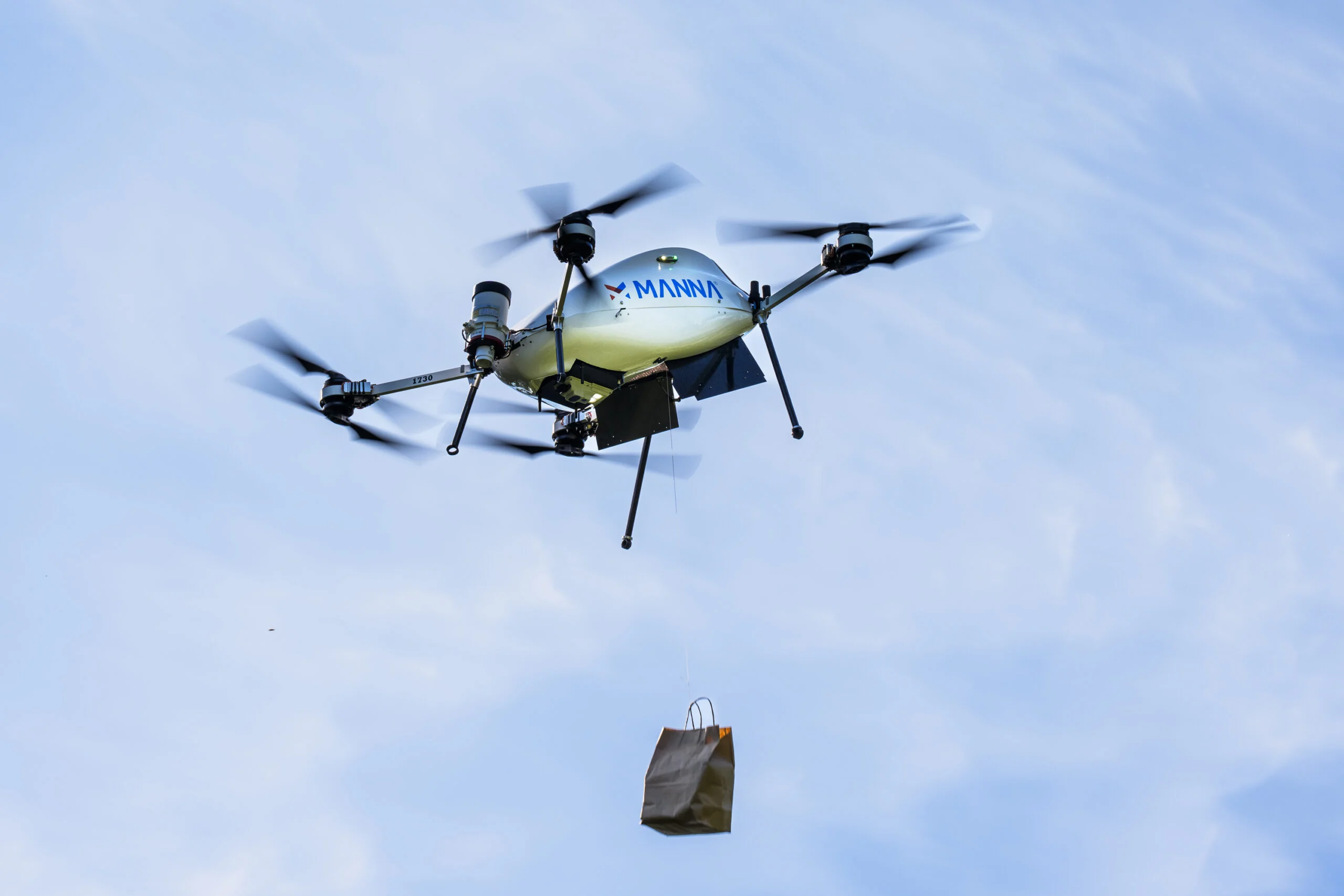The Drone Logistics Service Point project, led by Oulu University of Applied Sciences, is investigating how unmanned aerial vehicles can improve the efficiency of transport in different urban areas. The goal is to build a smart and scalable drone logistics infrastructure and lay the groundwork for the development of future drone logistics services in Finland.
“We want to make mistakes now so that companies can succeed later,” summarizes senior researcher Jussi Kangasoja from VTT. VTT is one of the partners in the EU-funded project.
Food from the air in a matter of minutes
One of the project’s concrete experiments was carried out at the Housing Fair in Oulu, where drones transported food from the city center to the fairgrounds. The flight distance was less than three kilometers, and it passed partly over water and the city. The usual route by car would have required traveling several kilometers via bridges, but with the drone, the delivery took only about three minutes.

“The pizza was warm when it arrived. It left the city center from the roof of a store and was in the customer’s hands in a few minutes,” Kangasoja says.
The deliveries were carried out in collaboration with Manna, a company that has made hundreds of thousands of drone deliveries in Dublin. In Finland, Manna operates in Niittykumpu, Espoo.
“The drones fly partially autonomously along a predetermined route. The flight is not controlled manually but monitored in the same way as industrial processes in factories. One operator can monitor several flights at the same time,” says Kangasoja.
Technology and safety are a cause for concern
Drone logistics is not just about flying – it requires special technology and high-level operating licenses for operators, which are not always easy to obtain. Demanding operations, such as transporting people or construction materials in urban areas, also call for experience, sufficient flight hours, and specific types of technology.
“There are few devices on the market that meet the requirements, and even fewer organizations with sufficient experience,” Kangasoja says.
The impact of regulation is indirect, as reflected in slow licensing processes and limited equipment availability. According to Kangasoja, the industry is evolving and requires active development. The project has made it possible to produce good practices that help companies in the industry move forward.
Exploring the prerequisites for drone business
The profitability of a potential commercial drone logistics service depends on population density and the size of the delivery area. The Oulu Housing Fair area represents an urban suburb with enough households and yard area to make such services viable.
“In densely populated areas, delivering packages by winch is more challenging than in sparsely populated areas. We talked a lot with customers at the fair, and they found the service to be very effective. The price is affordable for customers and similar to that of regular food delivery services”, Kangasoja notes.
Emissions-free drone delivery is also appealing to many consumers from a climate perspective.
The challenges of location data in the north
The Oulu pilot also provided valuable lessons on the use of location data in northern latitudes. The number of satellites in the sky varies depending on the time of day, which affects the accuracy of positioning.
“Certain times of day are challenging, as fewer satellites are visible in Oulu. It is important to take time-related factors into account when developing location-based services for the global market,” Kangasoja points out.

The effects of GNSS jamming on air traffic have been a hot topic in the industry due to the problems caused by Russia’s invasion. Oulu is located far enough west that GNSS interference did not affect drone flights during the pilot. However, interference is a risk that must be taken into account in business planning.
Towards the logistics of the future
The aim is to involve companies in the discussion and development work during and after the project.
“The goal is to share information and experiences so that companies can develop their own drone logistics solutions. Information will be available at the Location Innovation Discovery Day in Oulu in October,” Kangasoja says.
The joint event organized by the Location Innovation Hub and Oulu University of Applied Sciences will be held in Oulu on October 9. The event will showcase the drone logistics infrastructure in the Oulu region and explain its business opportunities.





